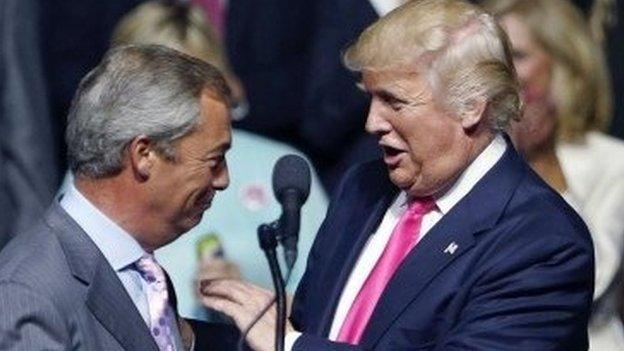Why does key former Trump adviser Steve Bannon now face jail time?
- Published

Donald Trump appointed Mr Bannon as his campaign CEO in August 2016 and, following his victory, handed him a key White House role
Steve Bannon was the driving force behind the right-wing Breitbart News website, and later became a key Donald Trump adviser before launching a podcast devoted to obliterating Democrats and Republicans who fail to fall in with the Maga - Make America Great Again - agenda.
He was one of Mr Trump's closest confidants during the 2016 presidential campaign and in the White House the following year,
His influence was so great that a Time magazine headline asked: "Is Steve Bannon the Second Most Powerful Man in the World?"
But although he lasted just months in his Trump administration job and has been beset by legal problems, he remains a very influential figure on the hard right of the Republican party.
His refusal to testify in front of a Congressional committee investigating the Capitol riot resulted in a conviction on two charges of contempt of Congress in 2022.
Having failed in his appeals, he now faces a potential four-month jail sentence, just as his former boss heads into another presidential election campaign.
From showbiz to politics
Born in Virginia in 1953, Bannon spent four years in the US Navy before completing an MBA at Harvard.
He went into investment banking and after a spell with Goldman Sachs moved into media financing, helping to get the comedy show Seinfeld, among others, off the ground.
He shifted into film production, working in Hollywood before branching out into independent political documentary-making, paying homage to former president Ronald Reagan, former Alaska Governor Sarah Palin and the Tea Party movement.
Through this work he met Andrew Breitbart, a staunchly conservative media entrepreneur who wanted to create a site that challenged what he saw as liberal-dominated mainstream media.
When Breitbart died of a heart attack in 2012, Bannon took over as head of Breitbart News and drove it forward.

One of Breitbart's many controversial headlines
The site positioned itself as a bellicose, conspiracy-tinged outlet for right-wing Americans disillusioned with mainstream politicians.
During the 2016 election campaign, the site was ardent in its support of Donald Trump. At the same time, Democrats and civil rights groups were accusing Bannon and his media outlet of allying themselves with white nationalists.
Breitbart writers, while growing in influence in mainstream Republican circles, also at times maintained links to fringe far-right figures and spread conspiracy theories.
Bannon himself hopped directly into the political fray in August 2016 when Mr Trump appointed him as his campaign CEO.
Following his victory, Mr Trump handed Mr Bannon a key role as chief White House strategist.
But Bannon left his post in August 2017 after months of reported power struggles with Mr Trump's son-in-law and senior adviser, Jared Kushner, as well as other high-level Trump advisers.
Mr Trump had also reportedly grown weary of press leaks and of Bannon taking credit for his election victory.
Bannon headed back to Breitbart, vowing to wage war on the president's opponents.
Although they remained ideologically aligned, the two men occasionally clashed. Bannon criticised some of Mr Trump's decisions, including calling the firing of FBI director James Comey the worst mistake in "modern political history".
And Bannon was quoted in a book as describing a meeting between Mr Trump's son and a group of Russians - an encounter that featured prominently in Mr Trump's impeachment trial - as "treasonous".
The former president hit back.
"Steve Bannon has nothing to do with me or my presidency. When he was fired, he not only lost his job, he lost his mind," he said at the time.
'Sloppy Steve'
Bannon swiftly recanted, but the damage was done. One of Breitbart News's major financial backers, Rebekah Mercer, cut him loose and days later he stepped down.
In January 2018, Mr Trump took to Twitter to cheer the decision with a new moniker for his old ally. "The Mercer Family recently dumped the leaker known as Sloppy Steve Bannon. Smart!" he wrote.
But both men remained committed to the Maga cause - and couldn't quite quit each other.
But by August 2019 Mr Trump was describing Bannon as "one of my best pupils" and "still a giant Trump fan".
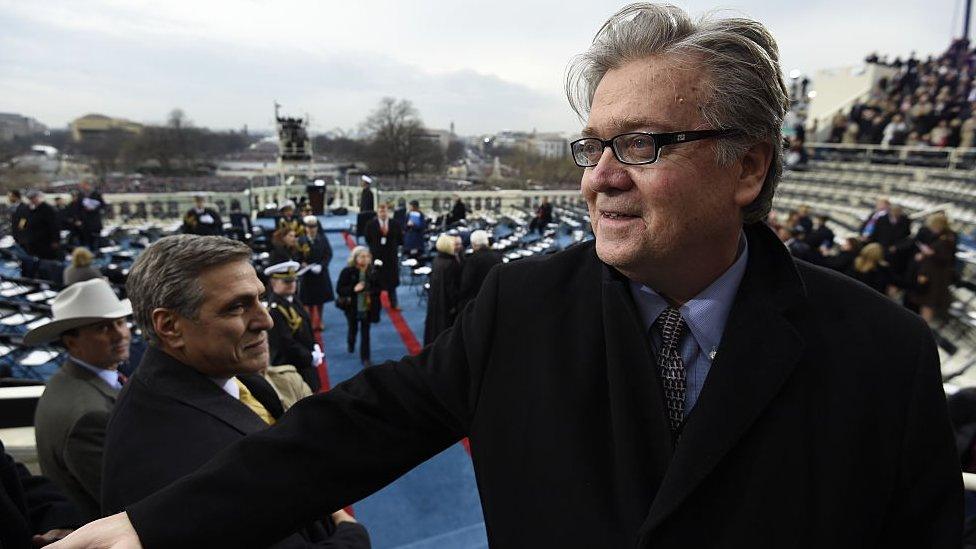
Mr Bannon, pictured at President Trump's inauguration in 2017
'We Build the Wall'
While spending time trying to build links with other right-wing nationalist movements in Europe and around the world, Bannon, now 70, also found himself increasingly facing legal trouble.
In 2020, he was indicted on charges of money laundering, fraud and conspiracy, accused of cheating donors to a private fundraiser designed to help build a wall on the US-Mexico border - one of Mr Trump's key policy goals.
Prosecutors in New York alleged that he had lied to donors to the "We Build the Wall" project and diverted some of the money to two of his associates.
He was spared federal charges by a Trump pardon, but still faces an indictment in New York state over the case.
Bannon's podcast - started in 2019 and titled War Room - became a key Maga media outlet, and one that spread Mr Trump's false theories of voter fraud prior to the Capitol riot on 6 January 2021.
He was said to have been an unofficial adviser to Mr Trump at the time, which earned him the Congressional subpoena which he resisted.
In July 2022 he was found guilty of two counts of contempt of Congress and was sentenced to four months in jail and fined $6,500 (£5,200).
He was allowed to remain free pending appeal, which was rejected by a federal court Friday. And while he could end up in jail at a crucial political period, he has continued to pump out War Room episodes - several each day - boosting the pro-Trump Maga hard right.
- Published8 September 2022

- Published22 July 2022
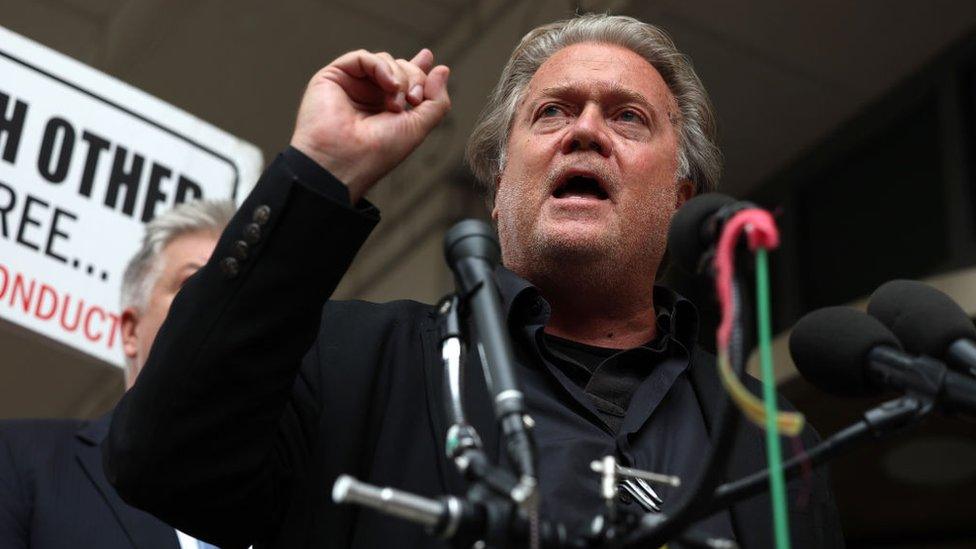
- Published17 November 2021
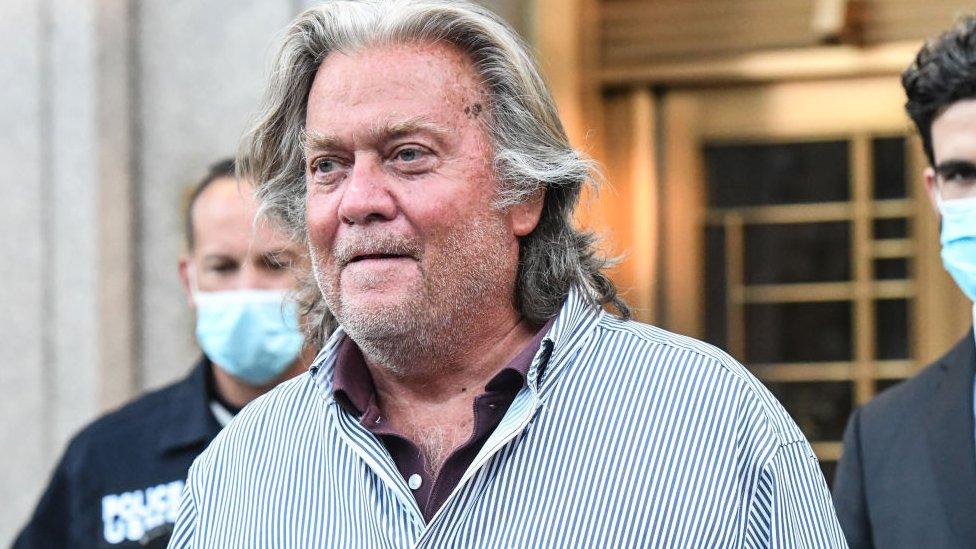
- Published20 August 2020
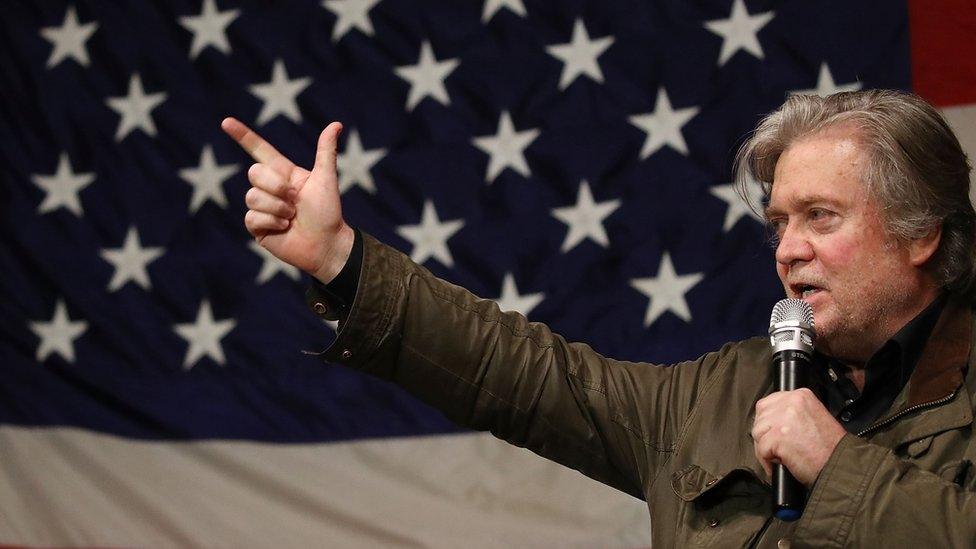
- Published20 November 2016
